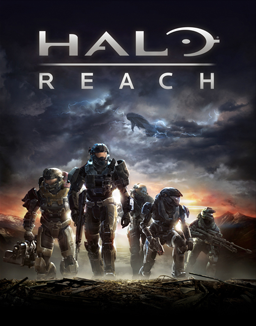The number one question I've received upon mentioning that I've been playing Halo: Reach lately is: "But is it REALLY that much different from Halo 3?" Of course, a few of my friends are hardcore Halo fans and would probably have bought Reach no matter what. But many people I've spoken to say that they just can't justify shelling out sixty bucks on what, to them, looks like Halo 3 but with a new skin. And every time I hear such a comment, I find myself being launched into a long-winded description of all the differences between Reach and its predecessor.
First, for everyone like me who bothers to play through the campaign (though on Legendary mode only, of course), there is a whole new storyline that provides many hours of gameplay. And when one takes into account the fact that consumers regularly spend $20 on DVDs, which provide about an hour and a half's worth of entertainment, Halo: Reach would need only contain a 4.5 hour long campaign (and nothing else) to be of the same value per hour of entertainment. Fortunately for gamers, the campaign is in fact longer than 4.5 hours.
Next, the multiplayer mode is much more expansive than that of Halo 3. First, the load-out system revolutionizes the entire multiplayer experience, and allows each player to develop strategies for using perks to his or her advantage. Additionally, there are several different game modes and weapons included. In addition to the normal slayer modes, Reach introduces Firefight and Swat, which is an example of a weapon-specific game mode that uses the new DMR as a replacement for the Battle Rifle. And to relieve a small amount of frustration in terms of matchmaking, the voting system in Reach allows players to have more of a say in which game-type comes up next than a simple veto.
Finally, the way to rank up has been completely overhauled. Rather than earning a new ranking based solely on skill, players earn experience to rank up simply by completing matches, though they earn more by killing more enemies and generally performing better. Additionally, Bungie implemented an armory and credit system that allows players to purchase upgrades and armor effects. And these credits are earned not only by completing matches and chapters in the campaign, but also by completing daily and weekly challenges, such as killing a certain amount of opponents that day, or getting a certain amount of grenade kills in a single match. These challenges are by far the quickest way to earn credits as each challenge can give up to 2500 points.
And even as I try to list out all the differences, I find myself remembering new innovations that I've forgotten to mention. I could go on and on because, but instead I'll just recommend that you go out and buy the game now if you haven't already, because the question "Is it that different from Halo 3?" should be met with a resounding "YES!"


